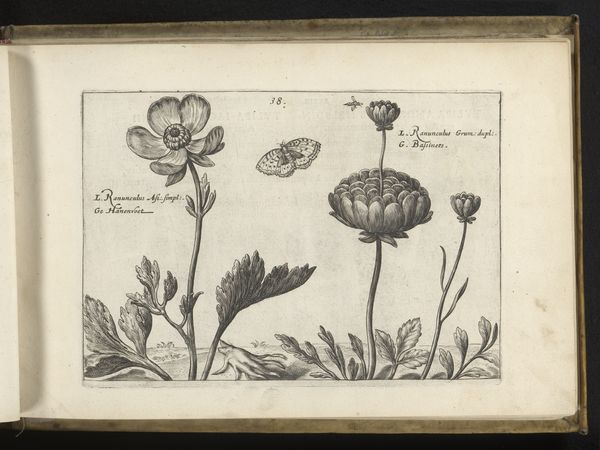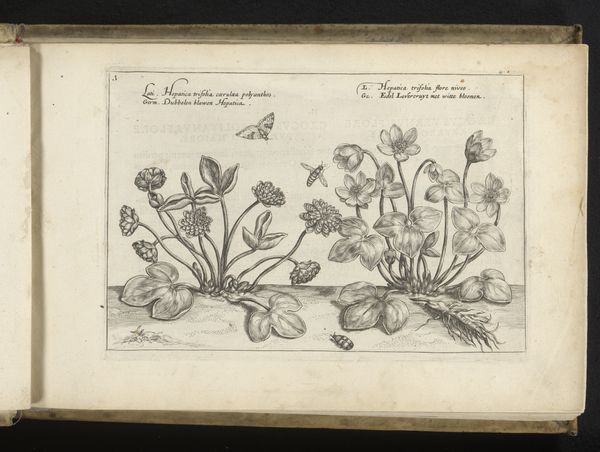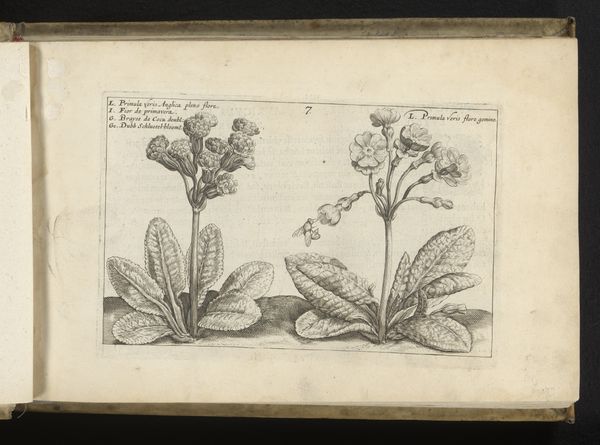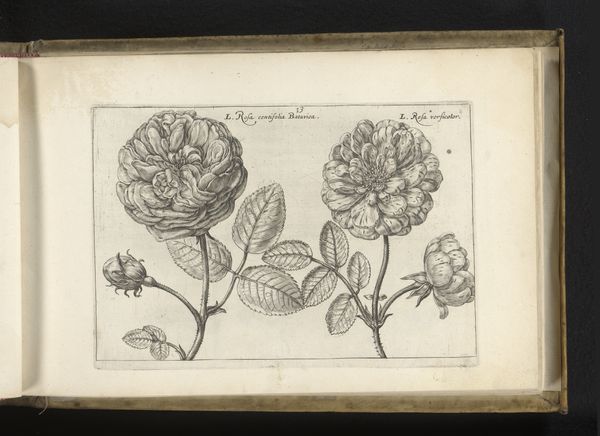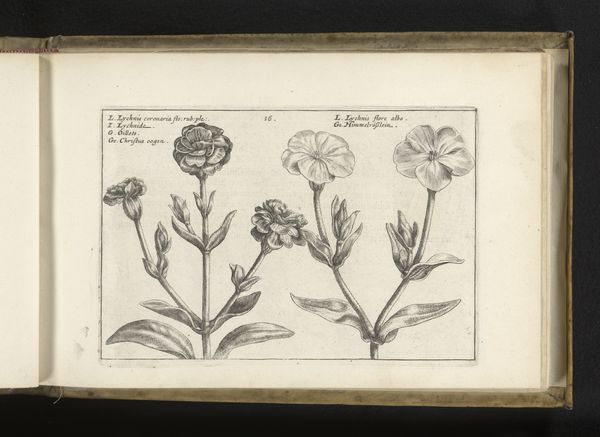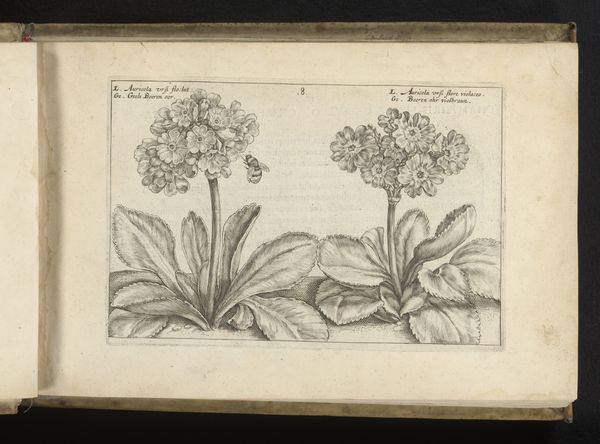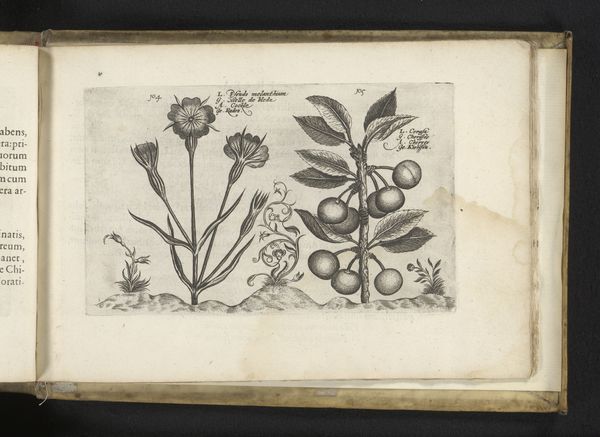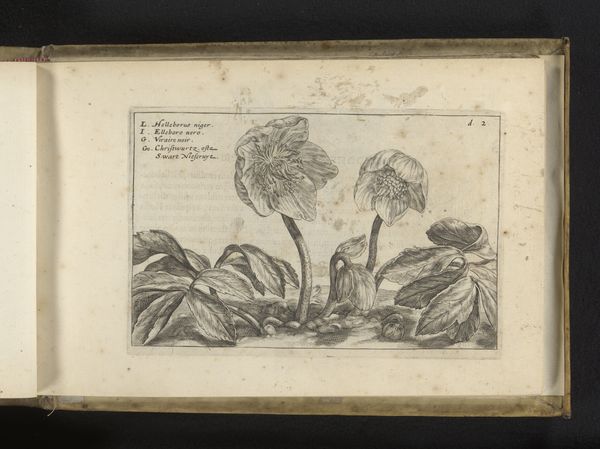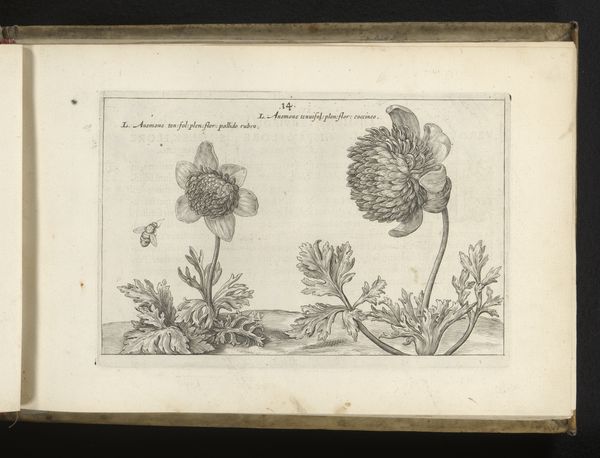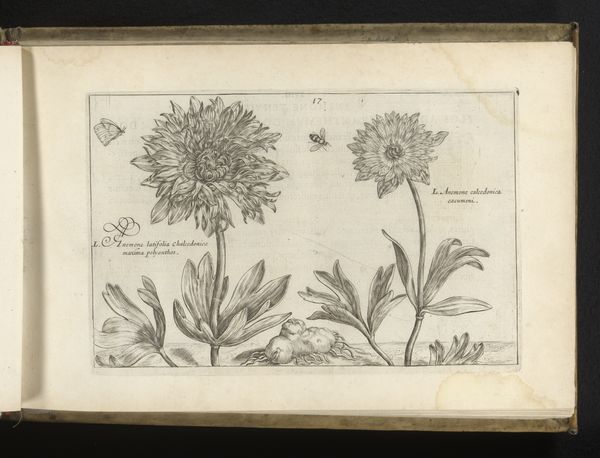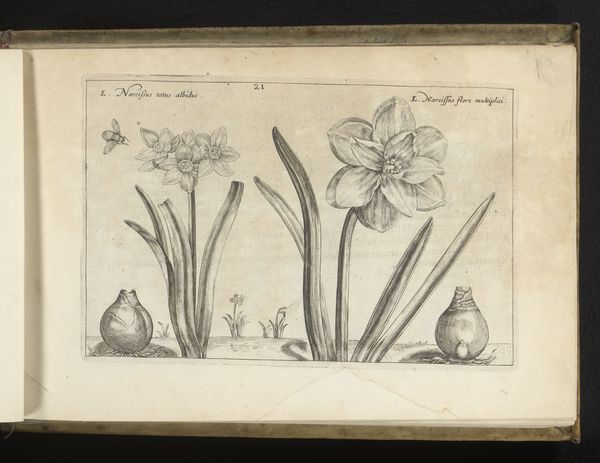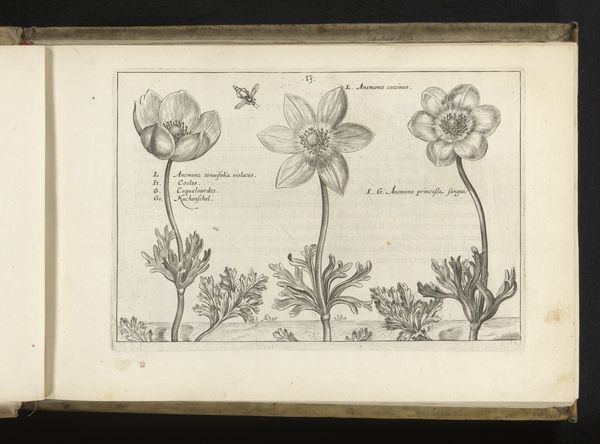
drawing, paper, ink
#
drawing
#
baroque
#
flower
#
figuration
#
paper
#
ink
Dimensions: height 147 mm, width 206 mm
Copyright: Rijks Museum: Open Domain
Editor: This delicate ink drawing, "Witte boterbloem en een tweede soort Ranunculus," or "White Buttercup and a Second Kind of Ranunculus," was created around 1617 by Crispijn van de Passe the Younger, and is currently held at the Rijksmuseum. I find its precision and detail quite striking. What catches your eye when you look at it? Curator: The symbolic weight, certainly. Flowers, especially in the 17th century, weren't simply pretty objects. They carried deep meaning, reflecting broader ideas about life cycles, morality, and even social status. Editor: Can you expand on that a bit? What do buttercups and ranunculus specifically represented? Curator: Buttercups, with their bright, golden hue, were often associated with cheerfulness and simplicity. But remember, the golden color also linked them to avarice or greed, a shadow side to the seemingly innocent bloom. The ranunculus, with its multiple layers of petals, signified wealth and abundance, but also fleeting beauty and vanity. Note also the bee hovering by one of the ranunculi - a symbol for diligence and the soul, sipping from earthly delights. What does this buzzing visitor say to you? Editor: I guess it adds a sense of movement, but also reminds us that beauty is ephemeral, like a soul departing. Is that common for botanical drawings from this time period? To layer so much meaning into what seems like a scientific study? Curator: Absolutely. These drawings weren’t just about botanical accuracy; they were also about conveying moral and philosophical ideas. The very act of depicting nature with such precision was a way of understanding God's creation. It's a fusion of art, science, and faith so typical of the Baroque era. Editor: That's really fascinating. I hadn’t considered the complex layers of symbolism beneath what appeared to be a simple flower study. Thanks for opening my eyes! Curator: My pleasure! Remembering the cultural memory embedded in visual symbols enriches the art experience and ties us to the past.
Comments
No comments
Be the first to comment and join the conversation on the ultimate creative platform.
